

Untitled. The Use of Social Media in School. Share this infographic on your site!

<a href=" src=" alt="The Use of Social Media in School" width="500" border="0" /></a><br />Image source: <a href=" Embed this infographic on your site! The editors at Best Masters in Education decided to research the topic of: Teens are actively Tweeting, Posting, Liking, and Commenting all across Social Media and there doesn't seem to be an end in sight. Increasingly, teachers and schools are attempting to leverage the engaging qualities of Social Media for use in the classroom and beyond - connecting students, teachers, and parents better than ever before. Untitled. Pros and Cons of Social Media in the Classroom. Social Media | Feature Pros and Cons of Social Media in the Classroom By Karen Lederer01/19/12 There’s an ongoing debate about the role social media should play in education.
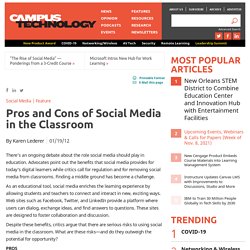
The role of Social Media in eLearning. The Role of Social Media in eLearning. No one can deny the frenziness that has taken over the entire world with social media, in the last 10 years.
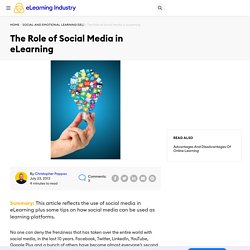
Facebook, Twitter, LinkedIn, YouTube, Google Plus and a bunch of others have become almost everyone’s second nature. Many think that social media is just another way to minimize personal communication and contact, for others an effective way to legitimately peek through people’s lives, and for others a pure waste of time with no value.
Personal opinions are of course respected, yet we got to take a look at the other side. This article reflects the use of social media in eLearning. Teachers, instructional designers, educational institutions, companies, and even organizations have started to heavily rely on the use of social media in formal learning, to share practices, promote information and educational material, share opinions, views and comments, embodying them in training programs and individual courses. Teach, Learn, Share: the Role of Social Media in eLearning. In today’s fast-changing environment and fast-paced lifestyle, technology has continually enabled us to keep up.
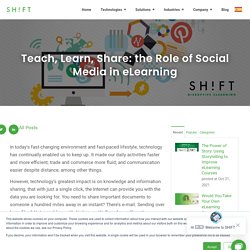
It made our daily activities faster and more efficient; trade and commerce more fluid; and communication easier despite distance, among other things. However, technology’s greatest impact is on knowledge and information sharing, that with just a single click, the Internet can provide you with the data you are looking for. You need to share important documents to someone a hundred miles away in an instant? Using Social Media in eLearning. Most of us have social media accounts.
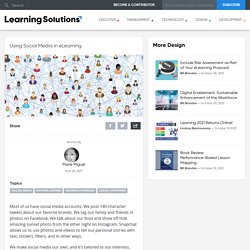
We post 140-character tweets about our favorite brands. We tag our family and friends in photos on Facebook. How Social Media is Effective for E-Learning. We cannot deny how social media has become a part of our daily lives, how it has influenced us and how it has connected us to the rest of the world.
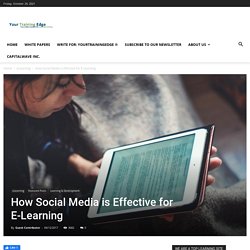
Facebook, Twitter, YouTube, LinkedIn, Google Plus are among the social media platforms that almost everyone accesses today. Aside from providing a means to peek into other people’s lives, communicate without borders, and serve as entertainment, we cannot take away the value social media provides in e-Learning. Educators, companies, and organizations rely on social media to assist in providing learning, share best practices, promote educational materials together or within the training modules and individual programs.
Acquiring knowledge has now become learner-centric which should have always been the case. 5 Ways Social Media Is Impacting eLearning - Vector Solutions. Listen: We don’t need to tell you the impact social media has made on how we, as human beings, interact and engage with one another.
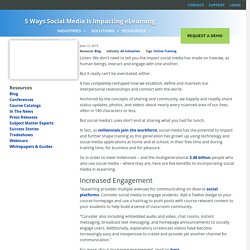
But it really can’t be overstated, either. It has completely reshaped how we establish, define and maintain our interpersonal relationships and connect with the world. Youtube. Incorporating & accounting for Social Media in Education. Youtube. Untitled. Untitled. Untitled.